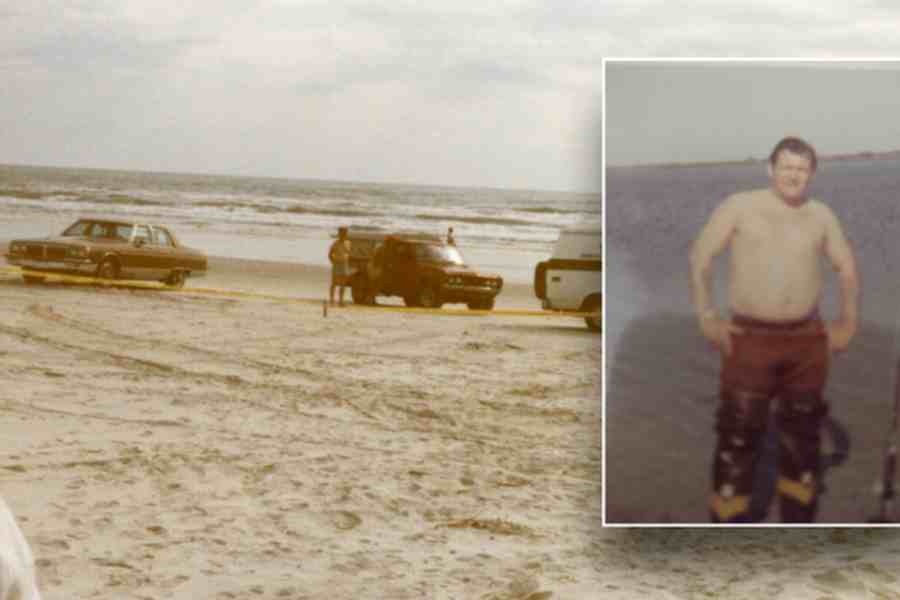
In a deeply moving resolution to a perplexing mystery that had remained unresolved for nearly four decades, the St. Johns County Sheriff’s Office announced a significant breakthrough: the identification of remains discovered on Crescent Beach, Florida, as those of Mary Alice Pultz, who mysteriously vanished back in 1968.
This long-awaited identification was made possible through relentless investigative work and significant advancements in forensic science, with a particular emphasis on DNA technology. The use of sophisticated DNA analysis techniques allowed authorities to extract and profile genetic material from the decades-old remains, a process that has revolutionized the way cold cases are approached.
This success not only highlights the determination and persistence of law enforcement agencies to bring closure to cold cases but also showcases the crucial role of cutting-edge scientific methods in uncovering truths that once seemed irretrievably lost.
The resolution of Mary Alice Pultz’s case serves as a powerful testament to the evolving capabilities of forensic science and its profound impact on solving criminal mysteries.
The Disappearance of Mary Alice Pultz
Mary Alice Pultz, born in 1943 in the vibrant town of Rockville, Maryland, was widely recognized for her spirited and nurturing personality. As a young mother devoted to her two children, her sudden estrangement from her family in 1968 struck an uncharacteristically discordant note in what many perceived as a stable life.
At the age of 25, Pultz’s life took a dramatic and dark turn when she was last seen departing with her boyfriend, John Thomas Fugitt, a man who later emerged as a central figure in the enduring mystery of her disappearance. This departure not only marked a pivotal moment of transition but also began a haunting period of uncertainty and pain for her family, who would grapple with her unexplained absence for decades.
The mystery of what happened to Mary Alice Pultz after that fateful day would linger, casting a long shadow over her loved ones and remaining an unresolved enigma in the annals of local history.
In April 1985, nearly 17 years after Pultz was last seen, construction workers on Crescent Beach stumbled upon human remains in a shallow grave. The site was immediately cordoned off and investigated, and the manner of death was determined to be homicide. Despite exhaustive efforts by the local authorities, the case quickly grew cold, with the victim’s identity remaining unknown. The remains were hauntingly referred to as “Jane Doe,” a moniker that stood until a major forensic breakthrough.
The major turning point in the investigation occurred in 2023, nearly 40 years after the remains were discovered. The St. Johns County Sheriff’s Office sent the remains to Othram, a laboratory specializing in forensic genetic genealogy in Texas. This lab employed cutting-edge DNA sequencing technologies to create a comprehensive DNA profile of the victim.
This profile was then compared against several consumer genealogy databases, a process that has revolutionized the way cold cases are approached by introducing the possibility of connecting DNA samples to distant relatives who have submitted their genetic information. This innovative approach led to the first substantial leads in decades.
In January 2024, after painstaking research and multiple DNA tests, Othram’s efforts bore fruit—the remains were conclusively identified as those of Mary Alice Pultz. This discovery provided a bitter closure to the family, confirming their worst fears about her fate.
Following the identification, detectives delved deeper into Pultz’s past and the circumstances surrounding her disappearance. It was revealed through further investigation that she had undergone brain surgery after 1968, evident from the burr holes in her skull, likely due to severe trauma from an unknown incident. Moreover, she had suffered other injuries indicative of a violent event, such as being struck by a vehicle.
John Thomas Fugitt, Pultz’s boyfriend at the time she went missing, was identified as a person of interest. Fugitt, who also went by the alias Billy Joe Wallace, had a criminal history that was unearthed during the investigation. He was convicted of the murder of a roommate in 1981 in Georgia and was sentenced to death. He died in prison before his execution could be carried out, leaving many questions unanswered about his involvement in Pultz’s demise.
Legacy Of The Investigation
The resolution of Mary Alice Pultz’s case is a significant achievement for the St. Johns County Sheriff’s Office, showcasing their dedication to solving even the coldest of cases. Sheriff Rob Hardwick emphasized the department’s commitment to justice, stating, “This case is a powerful reminder that with persistence and the right technological tools, no case is beyond solving.”
The sheriff’s office continues to investigate the exact circumstances of Pultz’s death, hopeful that further information will surface, providing complete closure to her family and potentially linking Fugitt directly to her murder.
The identification of Mary Alice Pultz has not only brought closure to her family but also stands as a beacon of hope for other families seeking answers about their missing loved ones. It underscores the importance of advancements in forensic technology and the impact of genealogical databases in solving criminal cases.
The relentless pursuit of justice in Pultz’s case serves as a testament to the dedication of law enforcement to uphold their oath to investigate and close cases, irrespective of how much time has passed. It also highlights the evolving nature of forensic science, which continues to grow in its ability to solve mysteries that once seemed destined to remain unsolved.
This case is a poignant reminder of the never-ending quest for truth and the importance of bringing closure to grieving families, proving that the passage of time does not diminish the resolve of law enforcement to solve crimes and seek justice for victims and their families.








